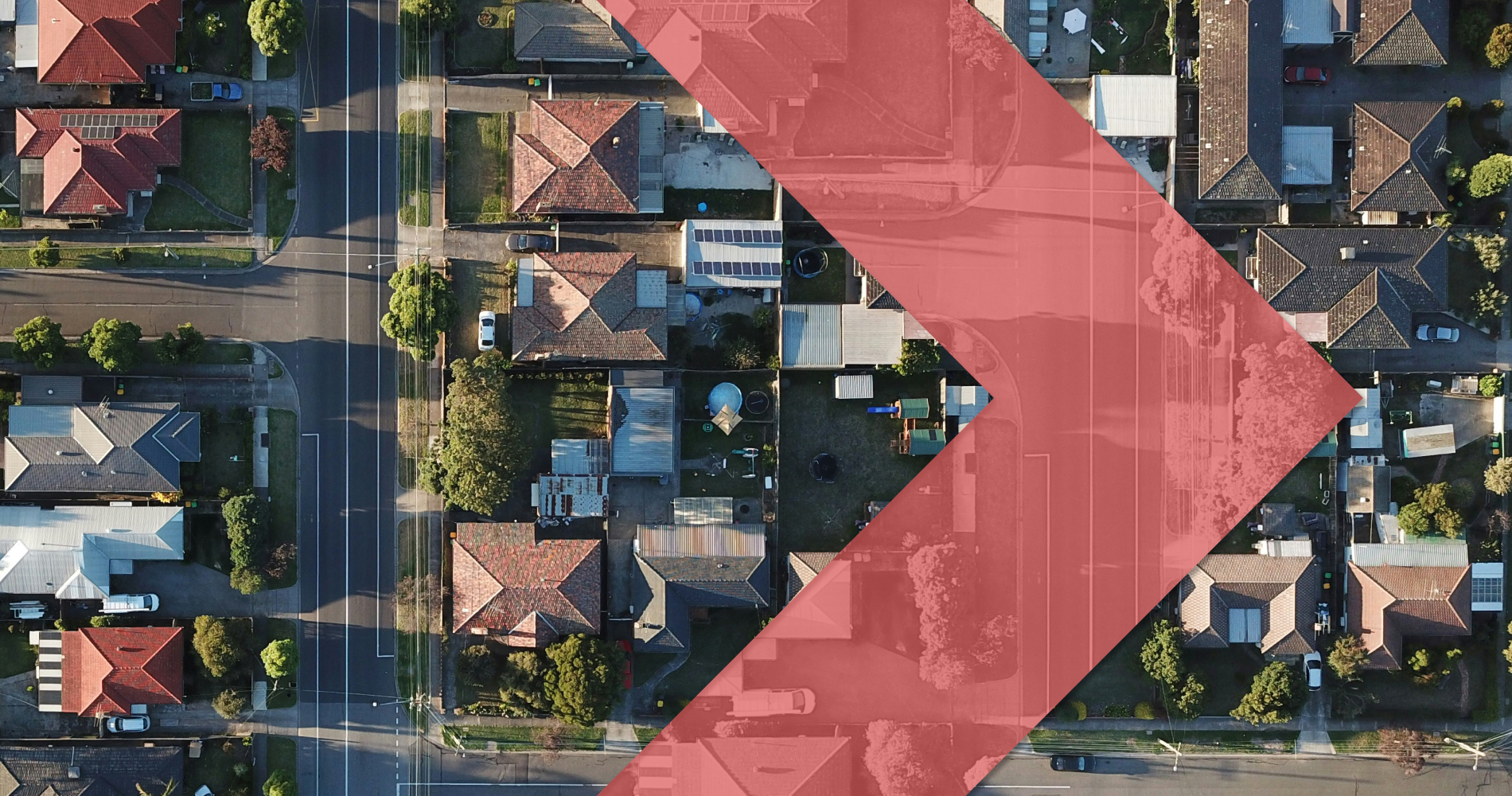Innovative homeownership partnerships led by local governments can empower communities to overcome systemic barriers to generational wealth.
Home is not just where the heart is: homeownership is proven to build wealth for you and your family. Typically, individuals and families who own their homes accumulate more assets over time, and according to the Federal Reserve (2022), the median net worth of homeowners is nearly 40 times greater than that of renters.
Unfortunately, rates of homeownership in the US are in lockstep with deep-rooted racial and economic disparities, creating a generation-over-generation racial wealth gap that negatively impacts BIPOC families. Rates of homeownership for white Americans are over 30% higher than for Black Americans, and rates among those in the highest income bracket are nearly double those in the lowest income bracket.
Affordable housing and homeownership can support every community member’s quest for financial security, but producing more housing units is only part of the solution. Local leaders must tackle interconnected issues simultaneously, offer holistic support, and involve cross-sector partnerships and collaboration to ensure homeownership is equitable.
Mayor Dickens of Atlanta understands this complexity and has set an ambitious goal to build or preserve 20,000 units of affordable housing in eight years. “We know that increasing the amount of safe, stable, and affordable housing will provide significant benefits throughout our community: increased economic mobility, a reduction in crime, better health outcomes, higher educational achievement. Our city cannot meet its fullest potential if our people do not have stable places to live and to lay their heads at night,” said the Mayor recently. In response to the challenge, the Mayor has established a new office dedicated to realizing the necessary affordable housing and addressing the root causes of the socioeconomic gap.
To shed more light on this solution, we spoke with Wesley Myrick, a former Fuse Executive Fellow, who serves on the Mayor’s Office Policy Team, Special Projects Division. We asked Myrick about the work involved in building safe and secure affordable housing, as well as the strategies his team is using to prioritize homeownership solutions that uplift diversity and legacy communities, rather than allowing gentrification and disenfranchisement.

NationSwell: Wesley, it is great to speak with you today and learn more about innovative approaches to homeownership. Let’s start with your role on the Mayor’s Office Policy Team, Special Projects Division. What does it involve?
Wesley Myrick: I serve on the housing team which has three divisions: Special Projects, Innovation Lab, and General Housing Policy. I joined the Director of Special Projects, who manages large-scale displacement initiatives like Forest Cove. That property was condemned due to the state of disrepair it was in, so the city stepped up to relocate families, acting as a champion for them and the larger community.
We also work on the Rapid Housing Initiative, which is focused on the quick delivery of highly dignified, comfortable homes for those experiencing chronic homelessness. One example of this is an apartment project called, The Melody, which opened in January of this year and consists of 40 units of permanent, supportive housing.
NS: Obviously safety and shelter are essential for everybody. But tell us more about why affordable housing is a key component when thinking about supporting thriving communities?
WM: First and foremost, what are thriving communities composed of? It’s people. It’s families. It’s diversity. Affordable housing enables the creation of diverse communities, where residents include not just high-income or low-income earners, but a genuinely mixed and inclusive population. That’s significant because corporations, supportive services, and other general services need the full gambit of individuals in a community.
Affordability at every income stream allows people to live wherever they want to live within the city. This matters because it means every community has people who are invested in being there and not just relegated to that neighborhood because it’s all they can afford. This leads to higher instances of pride and of people building community because they want to be there, which attracts businesses and developments of other things people want in a community. In Georgia, the roughly 40,000 stable, high-quality affordable housing units produced through the Low Income Housing Tax Credit (LIHTC) program between 2001 and 2019 boosted the state’s economy by $12 billion and created 4,284 new jobs annually, and led to increased property tax revenue for local governments.
This all starts with housing. When communities have affordable housing that is accessible to a mix of people who want to live and invest there , industry is attracted, amenities arrive, and people stay. Then, fifteen years go by and families have raised kids in a home, in a place they feel connected to that just 20 years ago may not have been a great place to be.
NS: Feeling pride and invested in a place is so important! Plus, affordable housing can be a path towards home ownership which encourages equitable economic mobility. Does this factor into the strategies that you all are putting in place when it comes to housing?
WM: This is a perfect example of why our department is structured the way it is. The Office of the Chief Policy Officer has five different divisions working in tandem. We have a housing team, strategic partnerships and strategic initiatives, a youth and education team, a neighborhood economic development team, and an ombuds team. Each team is tasked with ensuring Atlanta is the best place in the nation to raise a family.
The housing team works on housing unit production and preservation. We have a safe and secure housing program that examines why legacy residents are housing insecure and aligns city processes so that more people remain housed in their family homes without it being overly burdensome to do so. This ensures that regardless of your zip code, you can stay in the city and helps households of more modest means retain control of generational assets.
For the neighborhoods team, this means making significant financial and infrastructure investments into historically diverse communities to attract industry and jobs. For the strategic partnership and initiatives teams, this means convening our corporate and philanthropic communities to make investments into programs and communities that help stabilize and propel communities across the city. For our youth team, this means ensuring that youth have the best possible programs to help support their educational goals and workforce readiness through the summer jobs program and Year of the Youth. Lastly, our Umbuds team helps to catalog recurring shortfalls of government policy or practice as delivered directly from the electorate so that we can better produce what communities need to thrive.
NS: I’m glad you mentioned the different sectors. What do you see as the role of the private or philanthropic sectors when it comes to this work? Can you give an example of a successful partnership?
WM: There are limits on what public funds can be used for and how we can disperse them, whereas private money is much more flexible. We launched a $200 million fund last year in partnership with the Community Foundation of Greater Atlanta, supporting the production of affordable housing units. While that amount of money is a significant investment it’s, unfortunately, still not enough. We need the philanthropic community to make those investments in housing where the government can’t.
NS: Atlanta is growing as an economic and cultural hub. What are some of your key policy recommendations for establishing a secure future for Atlanta residents, especially legacy communities who are at risk of displacement?
WM: A cornerstone of our work has been building trust with communities, which is why we not only work across departments but also have dedicated personnel who work on these things. We currently have an anti-displacement grant that partially helps support Owner-Occupied Rehab Programs, which we are able to connect residents with and has been valuable for our senior community members who need our support to ensure ordinances are not violated. Oftentimes, properties fall into disrepair, not because there are bad actors, but because there’s simply a lack of resources. Mitigating these barriers when we can is something we’re very proud of and want to keep doing more of.
NS: You wrote an excellent piece on the City of Atlanta’s Faith-Based Development Initiative, which encourages faith-based communities to grant use of their underutilized land to affordable housing developments. What were some of your biggest takeaways from this initiative?
WM: I’ve learned that there are opportunities to create various housing types across the city at every level. For example, one house of worship has been rehabbing and renting single-family units using community development block grants and home funds, with the objective of providing them at affordable rents for those who need them. Simultaneously, they are working on a vision for a small multi-family community.
We’ve been fortunate that in addition to houses of worship, other city, state, and private-sector organizations have answered our call. We launched the Faith-Based Development Initiative in partnership with Enterprise Community Partners, a national leader in faith-based development, and a CDFI, so they fund affordable housing across the country. The other lesson is that community building doesn’t mean building buildings – it’s really about building hearts and minds around what’s possible and helping execute that.
NS: Land acquisition is one of the most costly elements of development, so efficient use of vacant publicly-owned land for housing development is key in increasing the availability of affordable housing. How have you tackled that in Atlanta?
WM: We chartered an organization called The Atlanta Urban Development Corporation (AUD), specifically tasked with managing the redevelopment of public land through the issuance of Request for Proposals (RFPs) to solicit, review, and select a development partner. They issue the RFPs, review them, figure out how to finance and fund them, and co-develop them with the organizations that respond to the RFPs. Thomasville Heights is their most recent RFP, focusing on mixed-income housing developments. Since they’re new and small, they’re also more nimble to move on projects. An important policy consideration is how you can expedite some of this public plan work. Create a mechanism by which you can successfully develop your project, and the developers will respond because the process is laborious – we found a way to make it less laborious with the AUD.
We have some good examples of how the government is doing all it can in collaboration with private partners to fill gaps while ensuring the work is community-owned and community-driven. For instance, the Midtown Fire Station, a vacant two-story firehouse that sits in Midtown Atlanta, is considered one of the most valuable plots of land in the country. The plan is to rehab the station and develop 20 to 30 housing units above it, which will be majority affordable in a part of town that’s not easy to afford. Adding one more unit makes a difference because that’s one more family that’s housed. For policymakers we have to remember that the units are important not because they are units but because they house people.
Pathways to affordable housing are key to unlocking equitable homeownership, and social mobility, and a step toward combating the historic causes of the ever-present and widening socioeconomic divide across the country. Bringing affordable housing projects and initiatives to fruition, as evidenced by leaders in Atlanta, Georgia, will require a blend of innovative, strategic cross-sector partnerships and a revamping of local government offices and functions. FUSE offers a unique model for cross-sector collaboration to address a wide range of issues affecting growing towns and cities across the US. Learn more about their past and current initiatives by visiting https://fuse.org/.

 "
"
